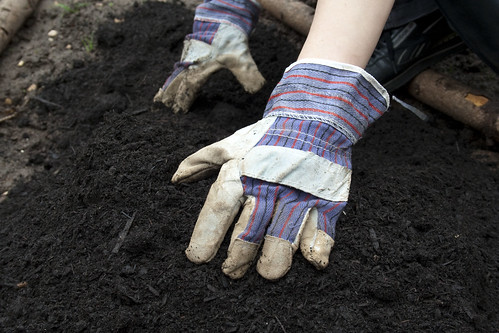Okay, so fast forward to late July 2012 and things are very different. I have moved into a mountainous community nearly an hour outside of Atlanta. In the spirit of starting anew and a determination to succeed in homestead farming, I purchased 20 Tilapia fingerlings from a local guy as a first step. I went out of my way to protect these fish and to make sure they were okay throughout the move in process.
So far, I still don't know much about these fish. In fact, I didn't even realize there were different kinds of Tilapia! So I don't know what kind I currently have. They look to be silver with small black stripes (and notorious big lips). But here is what I do know now; The most important thing you need to do when you get these fish is to get them comfortable.
 1) Water temperature - Make sure the water is a normal room temperature for the Spring, Summer and Fall weather. You'll have to bring them inside in the Winter because, unlike cold-water trout, these are warm water fish! Btw, I found that keeping the container in the shade can make a big difference in the overall temperature. Keep the container in full sun (at least 6 hours of sun) if possible.
1) Water temperature - Make sure the water is a normal room temperature for the Spring, Summer and Fall weather. You'll have to bring them inside in the Winter because, unlike cold-water trout, these are warm water fish! Btw, I found that keeping the container in the shade can make a big difference in the overall temperature. Keep the container in full sun (at least 6 hours of sun) if possible.
2) Feeding - Feeding the fish twice a day; at dawn and at dusk, just as you would regular fish with regular store-bought fish food. Try to give them some outside exposure as they are interested in small insects and mosquito larvae. So, natural forces will also feed them. From what I can tell, they immediately eat what they want of the feed and leave the rest for later or it goes to waste. So, sit back and observe them eat and you will get a better feel of how much to give them. Also, you'll notice that there are fish that eat, and grow, a lot faster than the other fish.
3) Oxigenate - I am planning on establishing an aquaponics cycle of watering using the water from the fish tank. The flow of the water back into the tank oxigenates the water (simply splashing into the water). But until the system is established, its very important to keep enough oxigen in the water. Schooling fish use a lot of oxygen and some can end up not getting enough, so buy a cheap $15 air pump at the pet store and put it in the tank. It's amazing that fish in water require so much air!
4) Shade - It's pretty neat to see these little guys school. They take food as a school, they hide as a school and they play as a school. It's like they choose the largest fish and them immitate everything he does! It's almost cute to see them all huddle together in one clump of the tank. They seem to like places to hide whether this be a plant in the container or some sort of swim toy for them. I don't know what creates in them excitement when no one is around the tank. It could have something to do with them NOT having some sort of enclosure in the tank, but one day, when no one was near the fish, one of them just leapt out and was floundering on the floor. Thank goodness, I actually saw this happen!
5) Regulation - Tilapia are not indiginous to most areas of the U.S. They can dominate a region if allowed. For this reason, wildlife management has set into place certain restrictions if these fish are owned. Although Tilapia will likely die in the Winter months if they were to invade a northern waterway, if they survived, it could be a problem. it is important to keep the fish in a meshed, covered, indoor or greenhouse area. The thinking is that a predatory bird could discover the tank, take a fish or two and then drop them accidentally into the nearby waters. Even unruly children could discover the fish and want to set them "free". It's hard to regulate, but the spirit of regulation is prevention. So, keep them secured!
6) Tough - People elect to raise Tilapia because they are so tough and prolific. Within 9 months, these fingerlings will be ready to reproduce and ready to eat! Although I have outlined some basics of caring for them as outlined above, don't worry too much about them. They require more care as babies, but they can withstand quite a bit. Try to be consistent, but outside of that, have a little faith. :)
Now that I've gotten the fish squared away, I'll blog again when I've gotten the first Aquaponics station running.




